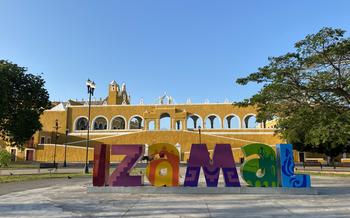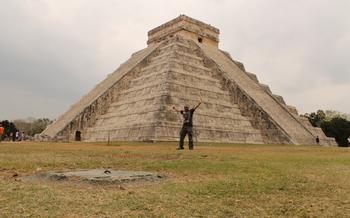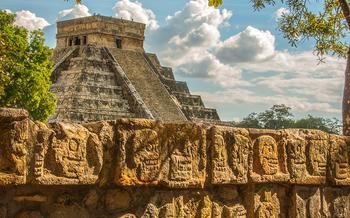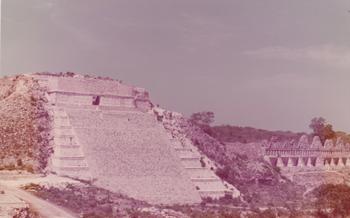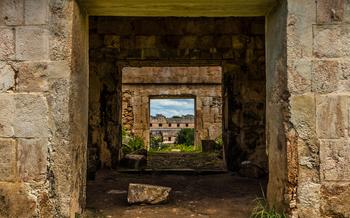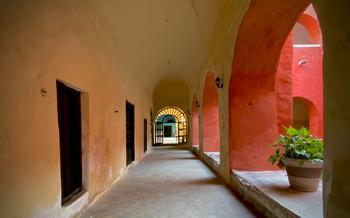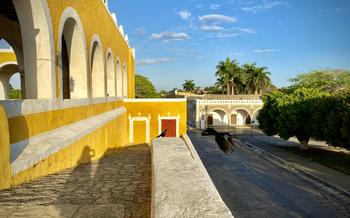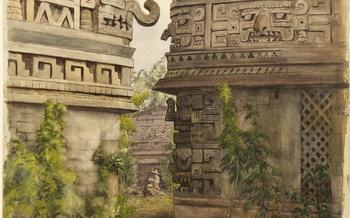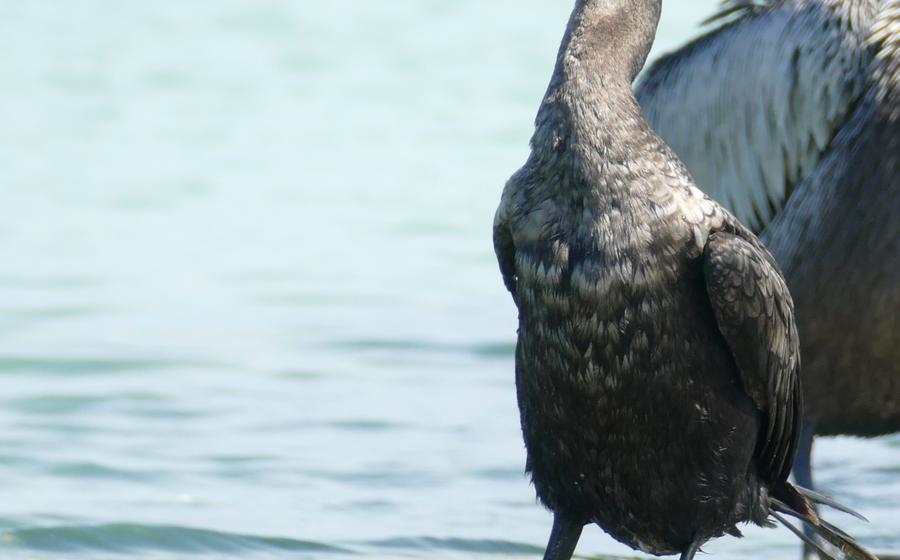
Celestún Biosphere Reserve
- The Celestún Biosphere Reserve: A Unique Destination
- A Natural Paradise: The Flora and Fauna of the Reserve
- Flamingos: The Stars of Celestún
- The Ria Celestún: A Journey Through Mangroves and Salt Flats
- Las Coloradas: A Pink Lake Paradise
- Cenotes: A Refreshing Dip in Nature's Pools
- Birdwatching: A Paradise for Bird Lovers
- Kayaking and Boating: Exploring the Reserve's Waterways
- Local Cuisine: A Taste of Yucatecan Flavors
- Cultural Experiences: Immersing in Maya Traditions
- Sustainable Travel: Protecting the Reserve's Beauty
- When to Visit: Finding the Best Time
The Celestún Biosphere Reserve: A Unique Destination
The Celestún Biosphere Reserve is a natural wonder located on the northwestern coast of the Yucatán Peninsula in Mexico. Covering an area of over 590,000 acres, this biosphere reserve is a treasure trove of biodiversity and cultural heritage. It is home to a diverse range of flora and fauna, including over 300 species of birds, many of which are migratory. The reserve also boasts a rich cultural history, with evidence of Maya settlements dating back centuries.
What makes Celestún truly unique is its extensive mangrove forests, which cover over 25% of the reserve's area. These mangrove forests are a vital ecosystem, providing habitat for numerous species of birds, fish, and other wildlife. The reserve is also home to a large population of flamingos, which can be seen in their thousands during the winter months.
The Celestún Biosphere Reserve is located in the state of Yucatán, about 90 kilometers northwest of the city of Mérida. It can be easily reached by car or bus from Mérida, and there are several tour operators that offer day trips to the reserve.
A Natural Paradise: The Flora and Fauna of the Reserve
The Celestún Biosphere Reserve is a haven for diverse flora and fauna. The reserve's varied ecosystems, including mangroves, salt flats, and tropical forests, support a wide range of plant and animal species. The reserve is home to over 300 bird species, including the iconic American flamingo, as well as various reptiles, amphibians, and mammals. Visitors can spot crocodiles, turtles, iguanas, and monkeys in their natural habitats. The reserve's unique plant life includes mangrove trees, which provide a vital habitat for wildlife and help protect the coastline from erosion. Conservation efforts are crucial to preserving the reserve's rich biodiversity, ensuring the survival of these valuable ecosystems and the species that depend on them. The Ria Celestún, a complex network of channels and estuaries, is particularly rich in wildlife and offers visitors the chance to observe a variety of species in their natural environment.
Flamingos: The Stars of Celestún
The Celestún Biosphere Reserve is home to a diverse array of birdlife, but the most iconic and beloved species are undoubtedly the flamingos. These elegant birds, with their long legs and vibrant pink feathers, are a symbol of the reserve and a major attraction for visitors.
Flamingos play a crucial role in the ecosystem of the reserve. They feed on small crustaceans and algae found in the shallow waters of the estuary, helping to control populations of these organisms and maintain the balance of the ecosystem. Their presence also attracts other birds, such as pelicans and egrets, which benefit from the abundance of food and shelter provided by the flamingo colonies.
The best time to see flamingos in Celestún is during the dry season, from November to April, when they congregate in large numbers in the shallow waters of the estuary. During this time, visitors can take boat tours or kayak through the mangrove forests to observe the flamingos up close. It is important to remember that flamingos are sensitive to disturbance, so it is essential to follow the guidelines and regulations set by the reserve to minimize any negative impact on their behavior and habitat.
The Ria Celestún: A Journey Through Mangroves and Salt Flats
The Ria Celestún is a unique and diverse ecosystem that forms the heart of the Celestún Biosphere Reserve. This intricate network of waterways, mangroves, and salt flats is home to a remarkable variety of plant and animal life.
The mangroves, with their intricate root systems, form a vital part of the ecosystem. They provide a habitat for numerous species, including fish, crustaceans, and birds, and they help to stabilize the shoreline and reduce erosion. The salt flats, formed by the evaporation of seawater, are also important habitats for a variety of species, including brine shrimp, algae, and wading birds.
A boat tour or kayak excursion through the Ria Celestún is a fantastic way to experience the beauty and diversity of this unique ecosystem. Visitors can paddle through the narrow channels, surrounded by the lush mangroves, and spot a variety of wildlife, including flamingos, herons, egrets, and crocodiles. The tour will also provide an insight into the traditional way of life of the local people, who have relied on the Ria Celestún for fishing, hunting, and gathering for centuries.
Las Coloradas: A Pink Lake Paradise
Las Coloradas is a breathtaking natural wonder located within the Celestún Biosphere Reserve. This unique pink lake owes its vibrant color to the presence of microscopic algae and other microorganisms that thrive in its highly saline waters. The intense pink hue is particularly striking during the dry season, when the water levels recede and the salt concentration increases.
Las Coloradas is not only a visual spectacle but also an important habitat for various bird species, including flamingos. These graceful birds flock to the lake in large numbers to feed on the abundant brine shrimp and other small crustaceans that thrive in the salty environment. Visitors can observe these magnificent creatures from a distance, capturing stunning photographs of their graceful flights and vibrant pink plumage.
Beyond its natural beauty, Las Coloradas holds cultural significance as well. The salt flats have been harvested for centuries by local communities, who use traditional methods to extract salt from the water. Visitors can witness this fascinating process and learn about the history and cultural traditions of the region.
Activities and Experiences
-
Swimming: Take a refreshing dip in the pink waters of Las Coloradas, but be sure to rinse off afterward to avoid skin irritation.
-
Birdwatching: Observe the diverse birdlife, including flamingos, pelicans, and egrets, that flock to the lake.
-
Photography: Capture stunning photos of the vibrant pink lake and the surrounding landscapes.
-
Cultural Experiences: Learn about the traditional salt-harvesting methods and the cultural significance of Las Coloradas.
-
Visit the Nearby Mayan Ruins: Explore the ancient Mayan ruins of Ek Balam, located just a short distance from Las Coloradas.
Mayapán, located in the heart of the Celestún Biosphere Reserve, is an ancient Maya city that offers a fascinating glimpse into the rich history and culture of this ancient civilization. Founded in the 13th century, Mayapán quickly rose to prominence as the capital of the League of Mayapán, a powerful alliance of Maya city-states that dominated the region for over a century.
The city's well-preserved ruins feature a diverse array of architectural wonders, including the Templo de Kukulcán, a towering pyramid dedicated to the Maya serpent god, and the Caracol Observatory, a unique circular structure that was used for astronomical observations. Mayapán's intricate carvings and sculptures provide insights into the beliefs, rituals, and everyday life of the ancient Maya.
Exploring Mayapán is an unforgettable experience that allows visitors to connect with the past and gain a deeper appreciation for the Maya civilization. Guided tours are available to provide in-depth information about the site's history and significance, while self-guided exploration allows for a more intimate encounter with the ruins. Whether you're a history buff, an architecture enthusiast, or simply someone who enjoys exploring ancient cultures, Mayapán is a must-visit destination in the Celestún Biosphere Reserve.
Cenotes: A Refreshing Dip in Nature's Pools
The Celestún Biosphere Reserve is home to a variety of cenotes, natural sinkholes filled with fresh water that offer a unique and refreshing experience for visitors. These cenotes were formed by the collapse of limestone bedrock, creating underground chambers that are often connected by a network of tunnels and passages. The water in cenotes is typically crystal clear and cool, making them ideal for swimming, snorkeling, and diving.
There are three main types of cenotes found in the Yucatán Peninsula: open cenotes, which are directly exposed to the surface; cave cenotes, which are located in underground caves; and semi-open cenotes, which have a partial roof covering. Each type of cenote offers a different experience, from sun-drenched swimming holes to secluded subterranean chambers.
For the ancient Maya, cenotes held a deep cultural and religious significance. They were considered to be gateways to the underworld, and were used for bathing, drinking, and religious ceremonies. Today, cenotes continue to be an important part of local culture and are a popular destination for both locals and tourists alike.
Some of the best cenotes to visit in the Celestún Biosphere Reserve and the surrounding area include:
- Cenote Azul: This open cenote is known for its deep blue water and stunning underwater visibility. It is a popular spot for swimming, snorkeling, and diving.
- Cenote Sambula: This cave cenote is located in a secluded jungle setting and features a series of interconnected chambers and tunnels. It is a great place for exploring and discovering hidden passages.
- Cenote X'keken: This semi-open cenote has a beautiful turquoise-colored pool surrounded by lush vegetation. It is a great place for swimming and relaxing in a natural setting.
Whether you are looking for a refreshing dip, an adrenaline-pumping adventure, or a glimpse into Maya culture, the cenotes of the Celestún Biosphere Reserve are sure to leave a lasting impression.
Birdwatching: A Paradise for Bird Lovers
The Celestún Biosphere Reserve is a haven for bird enthusiasts, with over 300 species of birds recorded within its boundaries. The diverse habitats found in the reserve, from mangrove forests to salt flats and coastal lagoons, provide a home for a wide variety of resident and migratory bird species.
Among the highlights are the Yucatan jay, a vibrant blue bird with a distinctive crest, and the black catbird, known for its melodious songs. The reserve is also home to several species of waterfowl, including ducks, geese, and herons, as well as shorebirds such as sandpipers, plovers, and oystercatchers.
The best time for birdwatching in Celestún is during the winter months, from November to April, when migratory birds from North America flock to the reserve. During this time, it is possible to see large concentrations of flamingos, roseate spoonbills, and other wading birds congregating in the shallow waters of the lagoon.
For the best birdwatching experience, it is recommended to bring binoculars and a field guide, and to hire a local guide who can help you spot and identify the different species. Guided birdwatching tours are available from several tour operators in Celestún, and can be customized to suit your interests and skill level.
Whether you are a seasoned birdwatcher or a casual nature enthusiast, the Celestún Biosphere Reserve offers an unforgettable birdwatching experience, with opportunities to see a wide variety of bird species in their natural habitat.
Kayaking and Boating: Exploring the Reserve's Waterways
The Celestún Biosphere Reserve offers a unique opportunity to explore its diverse ecosystems and wildlife from the water. Kayaking and boating are popular activities that allow visitors to navigate the reserve's tranquil waterways, paddle through mangrove forests, and encounter wildlife up close.
Guided tours are available for those who prefer a more structured experience, with knowledgeable guides leading the way and providing insights into the reserve's natural history and ecology. Self-guided excursions are also possible, offering a more independent and adventurous way to explore.
Kayaking and boating in the reserve provide a unique perspective on the diverse habitats and wildlife. Visitors can paddle past flocks of flamingos, spot crocodiles basking in the sun, and encounter a variety of bird species, including herons, egrets, and cormorants.
It is important to respect the environment and follow safety guidelines when kayaking or boating in the reserve. Visitors should wear life jackets, stay on designated trails, and avoid disturbing wildlife. Several routes and areas are particularly suitable for kayaking or boating, offering varying levels of difficulty and scenery.
Whether you choose a guided tour or a self-guided adventure, kayaking or boating in the Celestún Biosphere Reserve is an unforgettable experience that allows visitors to immerse themselves in the beauty and tranquility of this natural paradise.
Local Cuisine: A Taste of Yucatecan Flavors
The Celestún Biosphere Reserve is not just a haven for nature enthusiasts but also a culinary paradise that offers a unique blend of Maya, Spanish, and Caribbean flavors. Yucatecan cuisine is renowned for its vibrant colors, rich spices, and fresh ingredients, showcasing the region's cultural heritage and culinary traditions.
Must-try dishes in Celestún include panuchos, crispy tortillas topped with refried beans, shredded turkey or chicken, and pickled red onions. Cochinita pibil, a traditional slow-roasted pork dish marinated in achiote paste and wrapped in banana leaves, is another local delicacy not to be missed. For seafood lovers, ceviche, made with fresh fish or shrimp marinated in lime juice and served with avocado, tomatoes, and onions, is a refreshing and flavorful option.
To experience the authentic flavors of Yucatecan cuisine, it is recommended to visit local restaurants and markets, which offer a more immersive and sustainable dining experience. Supporting local businesses helps preserve traditional recipes and culinary practices while contributing to the community's economic development.
Cultural Experiences: Immersing in Maya Traditions
The Yucatán Peninsula is a treasure trove of Maya culture, and Celestún is no exception. Immerse yourself in the region's rich heritage through various cultural experiences. Visit Maya villages like Ekmul and Tibolón, where you can witness traditional Maya life and learn about their customs and traditions. Attend vibrant festivals like the Fiesta de San Patricio, which showcases traditional music, dance, and cuisine. Explore fascinating Maya ruins like Chichén Itzá and Uxmal, which offer a glimpse into the ancient Maya civilization. Take cooking classes to learn how to prepare delicious Maya dishes using fresh, local ingredients. Support local artisans by purchasing handmade crafts, textiles, and pottery, which help preserve Maya cultural heritage. Remember to be respectful of local customs and traditions, and ask permission before taking photos of people or sacred sites.
Sustainable Travel: Protecting the Reserve's Beauty
As responsible travelers, it is essential to minimize our environmental impact and support sustainable practices when visiting the Celestún Biosphere Reserve. Here are a few tips for sustainable travel:
- Reduce waste: Avoid single-use plastics, carry a reusable water bottle, and dispose of waste properly in designated bins.
- Respect wildlife: Observe wildlife from a distance, do not feed or disturb animals, and avoid using flash photography.
- Support local communities: Choose locally-owned restaurants and tour operators that support conservation efforts and fair wages.
- Choose eco-friendly accommodation: Opt for hotels or guesthouses that prioritize sustainability, such as using solar energy, conserving water, and reducing waste.
- Support conservation initiatives: Consider donating to organizations working to protect the reserve, such as the Celestún Biosphere Reserve Conservation Foundation.
By following these tips, we can help preserve the natural beauty and cultural heritage of the Celestún Biosphere Reserve for future generations.
When to Visit: Finding the Best Time
The best time to visit the Celestún Biosphere Reserve depends on your interests and priorities. The dry season (November to April) offers warm and sunny weather, making it ideal for swimming, sunbathing, and exploring the reserve's many outdoor attractions. This is also the peak season for flamingo watching, as thousands of these majestic birds migrate to Celestún to feed and breed.
The rainy season (May to October) brings lush greenery and fewer crowds, making it a good time to enjoy the reserve's natural beauty and wildlife without the hustle and bustle of the high season. However, be prepared for occasional rain showers and higher humidity.
If you're interested in sea turtle nesting, plan your visit between May and September, when several species of sea turtles come ashore to lay their eggs on the reserve's beaches. It's an incredible experience to witness these ancient creatures in their natural habitat.
No matter when you choose to visit, the Celestún Biosphere Reserve offers a unique and unforgettable experience. Just be sure to pack accordingly and plan your activities based on the weather and seasonal conditions.

